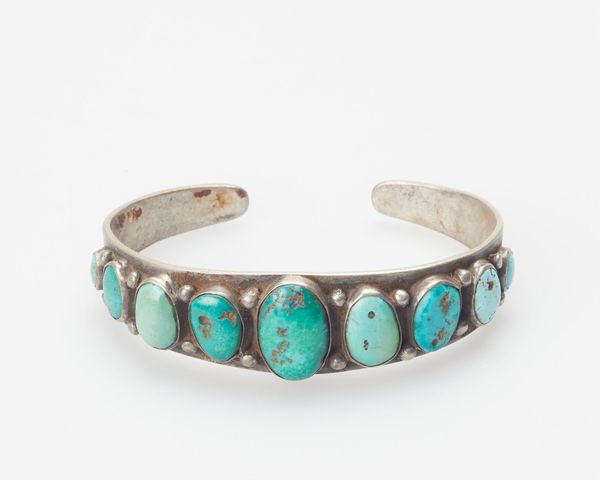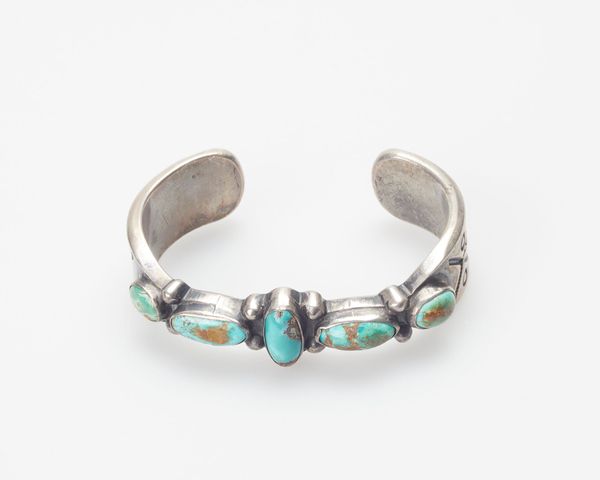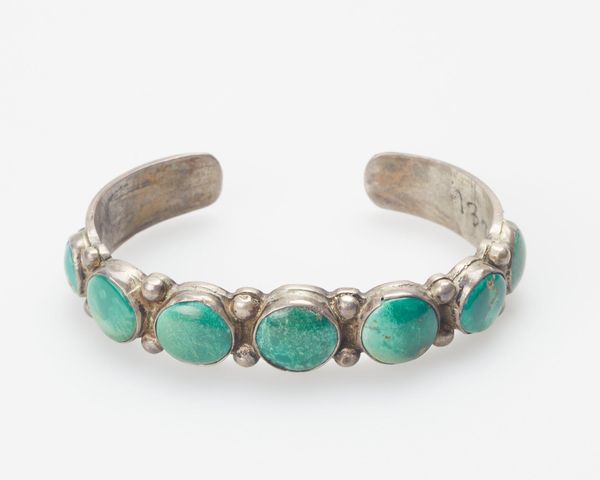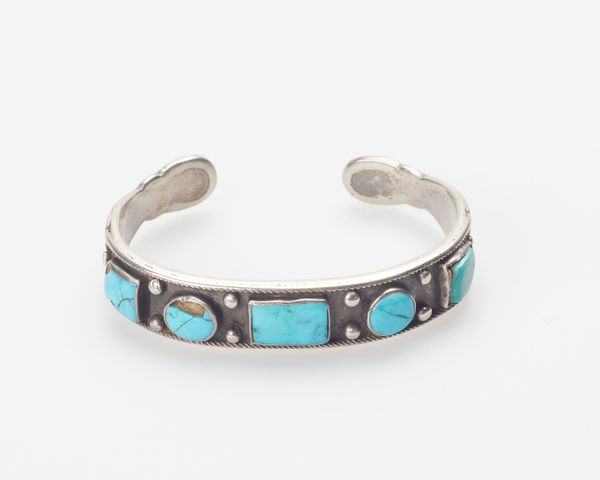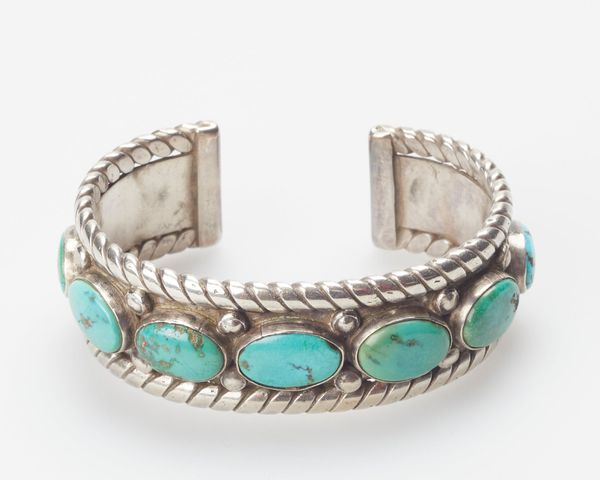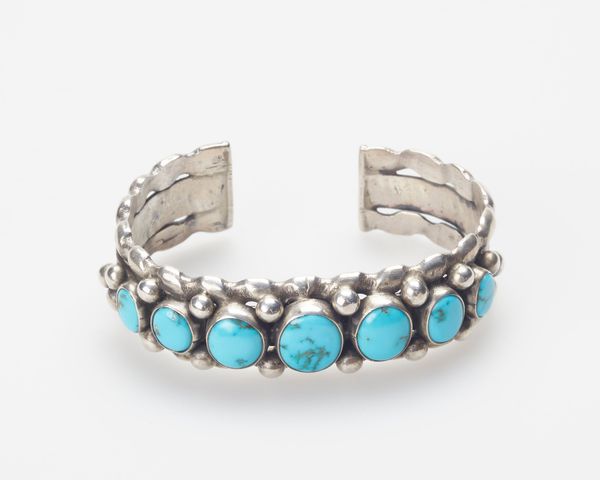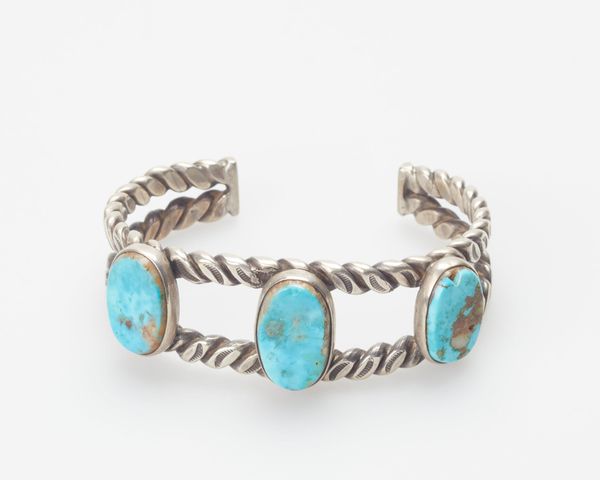
silver, metal, sculpture
#
silver
#
metal
#
sculpture
#
indigenous-americas
Dimensions: 2 5/8 x 1/2 in. (6.67 x 1.27 cm)
Copyright: Public Domain
Curator: The Minneapolis Institute of Art holds a striking silver bracelet created by a Navajo artist, dating to around the 1940s. It is a beautiful piece of decorative art. Editor: My first thought is that it seems so substantial, despite being something you wear. The silver and turquoise create a strong visual statement. Curator: The use of silver by Navajo artists became prominent in the late 19th century. Initially, they melted down coins, incorporating this new material into their existing jewelry-making traditions. Editor: Turquoise holds a significant place in Navajo culture, doesn't it? Beyond simple adornment. Curator: Absolutely. Turquoise is culturally associated with protection and good fortune. Think about its coloration – reminiscent of sky and water. It is the embodiment of life and prosperity in many Indigenous cosmologies. Editor: The triangular shapes of the turquoise are interesting as well. Geometry in art always seems to signify a deeper symbolic order. Do they represent something specific in Navajo symbolism? Curator: While the shapes might allude to specific clan symbols or stories, the simple repetition is potent, given Navajo culture's reverence for balance. Mass-produced silver increased, unfortunately, because of market forces, but authentic, carefully made works retained high status. Editor: The piece also appears to be assembled – riveted, perhaps? That act of construction lends an even more hands-on, personalized feeling to it. It reminds me that adornment is very tied into culture and societal rank. Curator: This era of Native American art saw an increasing demand for these crafts, often influenced by tourism and the broader cultural shifts. So this bracelet stands as a testament of resilience, carrying rich history despite these colonial influences. Editor: Knowing that really shifts my perspective. I see it less as simple ornamentation now and more as a statement of identity and a narrative of survival. Curator: Precisely. It's a beautiful object with interwoven meanings, and reflects the history of cultural interchange.
Comments
No comments
Be the first to comment and join the conversation on the ultimate creative platform.
